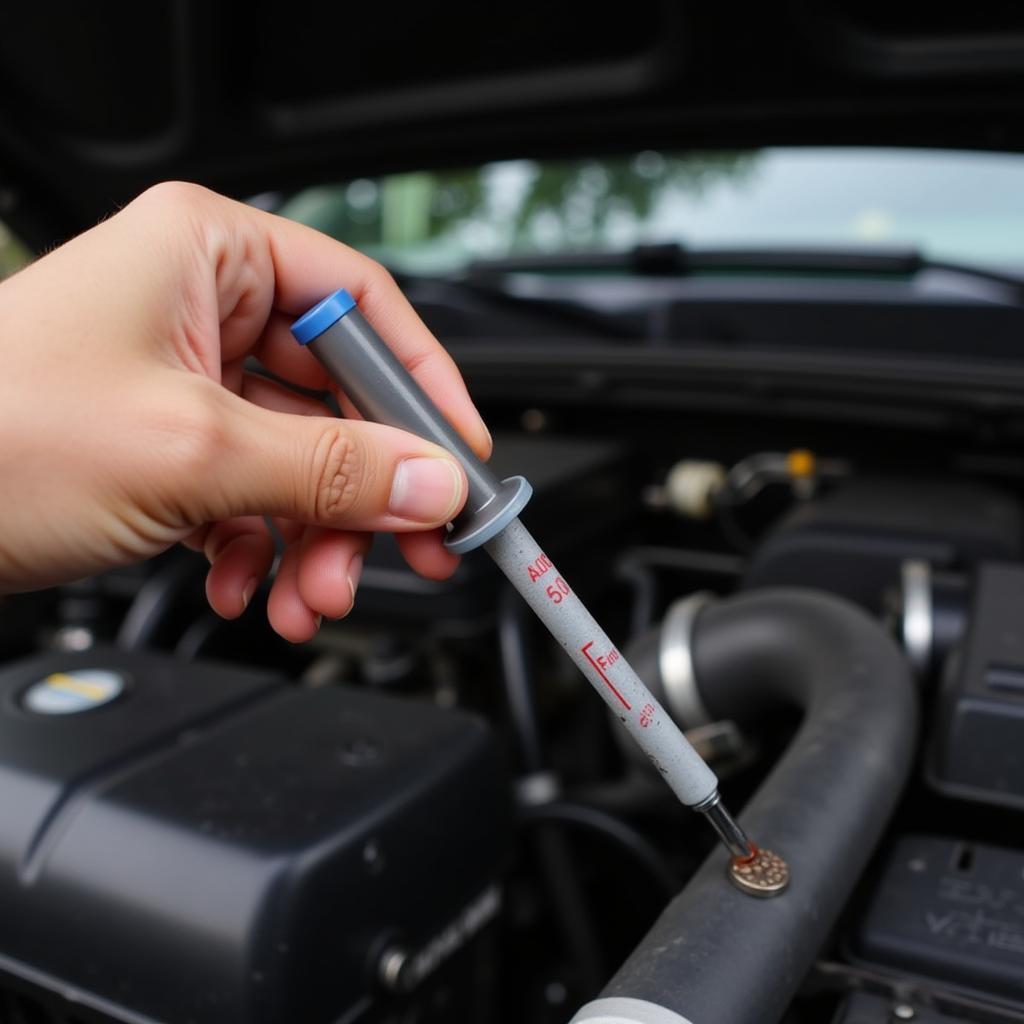A sagging or leaning car seat can be more than just an annoyance; it can be a safety hazard. It affects your driving position, comfort, and even the effectiveness of your car’s safety features. Luckily, fixing a sagging or leaning car seat is often a manageable DIY project or a relatively inexpensive repair at a professional shop. This article will guide you through the common causes and solutions for this common car problem.
Similar to car upholstery fixings, addressing a sagging car seat early can prevent further damage and maintain the vehicle’s resale value. There are several reasons why your car seat might be sagging or leaning. The most common culprit is wear and tear on the seat’s internal components, particularly the springs or foam padding. Over time, these materials can lose their resilience and support, causing the seat to sag. Another potential issue is a broken or damaged seat frame. Less commonly, problems with the seat’s adjustment mechanisms can also contribute to sagging or leaning.
Identifying the Problem with Your Sagging or Leaning Car Seat
Before you can Fix A Sagging Or Leaning Car Seat, you need to pinpoint the source of the problem. Start by visually inspecting the seat. Look for obvious signs of damage, such as broken springs, torn upholstery, or bent frame components. Try adjusting the seat’s position. If the seat doesn’t move smoothly or locks into position correctly, the adjustment mechanism might be faulty. Finally, press down on different parts of the seat cushion and backrest. This can help you identify areas where the padding has compressed or the springs have lost their tension.
DIY Solutions for a Sagging or Leaning Car Seat
Depending on the cause of the problem, several DIY solutions can help you fix a sagging or leaning car seat. For minor sagging caused by compressed foam, you can try adding extra padding. A simple foam cushion or even a folded blanket placed under the upholstery can provide additional support and improve comfort. If the problem is a broken spring, you might be able to replace it yourself. However, this requires some mechanical skills and specialized tools. You’ll need to access the seat’s internal components, which may involve removing the upholstery and other parts.
When to Seek Professional Help for Car Seat Repair
While some car seat issues can be tackled with DIY fixes, others require professional expertise. If the seat frame is damaged or the adjustment mechanism is faulty, it’s best to take your car to a qualified mechanic or upholstery shop. These repairs often involve welding, specialized tools, and in-depth knowledge of car seat construction. Attempting these repairs yourself could worsen the problem or even create safety hazards. This is similar to the challenges faced when fixing car headliner, where professional assistance is often recommended for optimal results.
Preventing Future Car Seat Issues
Just like considering whether to fix car or buy new car, regular maintenance can help prevent future car seat problems. Avoid placing heavy objects on your seats for extended periods, as this can compress the foam and strain the springs. Clean your car seats regularly to prevent dirt and grime from accumulating and accelerating wear and tear. Finally, consider using seat covers to protect the upholstery from damage and extend its lifespan. These preventative measures can help keep your car seats in good condition for years to come.
What if the issue is with the seat adjuster?
If the problem lies with the seat adjuster, it’s often best to consult a professional. This mechanism can be complex and requires specialized knowledge to repair. Knowing where to fix cigarette burns in car can be a good starting point to find qualified professionals for car seat repairs as well.
To sum up, fixing a sagging or leaning car seat can significantly improve your driving comfort and safety. By identifying the root cause of the problem and choosing the appropriate solution, you can restore your car seats to their former glory. Remember that regular maintenance is key to preventing future issues and ensuring the longevity of your car’s interior.
For further assistance or if you have any questions, please don’t hesitate to contact AutoTipPro.
Phone: +1 (641) 206-8880
Office: 500 N St Mary’s St, San Antonio, TX 78205, United States
Knowing how to how do you fix cigarette burns in car can be helpful in maintaining the overall condition of your car’s interior.






Leave a Reply